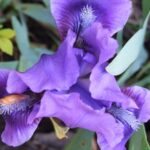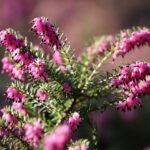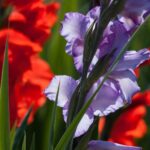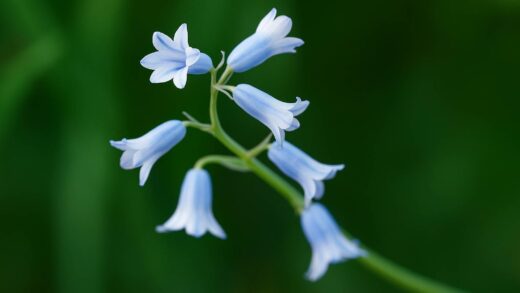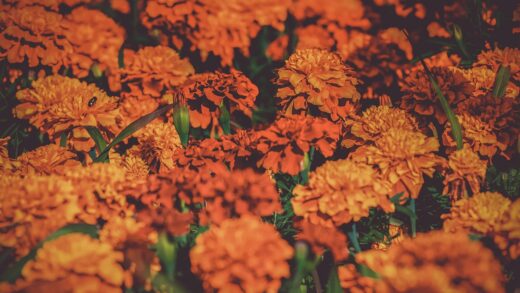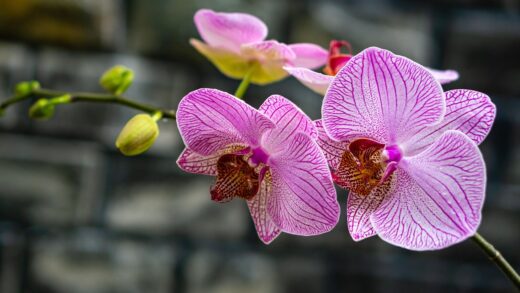Proper pruning is the single most important annual task for the cultivation of a truly magnificent Caryopteris, transforming it from a potentially untidy collection of woody stems into a dense, beautifully formed shrub that is absolutely covered in its signature blue flowers. This plant has a distinct growth habit, producing all of its blossoms on the new wood that grows during the current season. This characteristic is the key to understanding why a hard, annual pruning is not just beneficial but essential for maximizing its floral display. By cutting the shrub back severely each year, you stimulate a vigorous flush of new, flower-bearing stems, ensuring a spectacular show from late summer through autumn while also maintaining the plant’s desirable compact and mounded shape.
The fundamental reason behind this aggressive pruning strategy is to remove the old, unproductive wood from the previous year. If left unpruned, a Caryopteris will start to grow new shoots from the tips of the old stems. This leads to a leggy, open, and often top-heavy plant, with the flowering occurring only at the periphery. The base of the shrub becomes increasingly woody and bare over time, diminishing its ornamental appeal. A hard annual prune forces all the new growth to originate from the base of the plant, resulting in a much fuller, denser shrub with flowers distributed evenly throughout its structure.
This annual “rejuvenation” pruning is what keeps the bluebeard looking fresh and vibrant year after year. It effectively resets the plant each spring, encouraging it to produce a brand-new framework of stems. This process not only guarantees a profusion of flowers but also helps to control the overall size of the shrub, making it an excellent choice for smaller gardens or for use in mixed borders where maintaining a tidy form is important. It is this forgiving and responsive nature to pruning that makes Caryopteris such a rewarding plant for gardeners to manage.
Furthermore, this pruning regimen is perfectly suited to the plant’s behavior in colder climates. In many regions, the top growth of the shrub will experience some dieback over the winter due to frost and cold temperatures. The annual hard pruning in late winter or early spring provides the perfect opportunity to neatly remove all of this potentially damaged wood, tidying up the plant and preparing it for the new season. It is an elegant and efficient system where routine maintenance simultaneously addresses winter damage and promotes superior flowering.
The optimal timing for pruning
The timing of your annual pruning is critical to the health of the plant and the success of its flowering season. The ideal window for cutting back Caryopteris is in the late winter or very early spring, before any significant new growth has begun. In most temperate climates, this period typically falls between late February and early April. The goal is to prune after the worst of the winter cold has passed but before the plant has expended a significant amount of its stored energy reserves on producing new shoots that will just be cut off.
More articles on this topic
Pruning too early in the winter is generally not recommended. While the plant is dormant, making fresh cuts can expose the tissue within the stems to severe cold, frost, and drying winds, which can lead to further damage or dieback. Leaving the old stems in place for the majority of the winter also provides some minor protection for the crown of the plant and can help to trap insulating snow around its base. Waiting until the cusp of spring allows you to assess the full extent of any winter dieback before you make your cuts.
Conversely, waiting too long to prune can also be detrimental. If you prune after the new growth is already well underway, you will be removing shoots that the plant has already spent considerable energy producing. This can delay the onset of flowering and may result in a slightly less vigorous plant for that season. A good visual cue for the perfect pruning time is to look for the first signs of life at the base of the plant. When you see small, new buds beginning to swell on the lower parts of the old stems, it is the ideal moment to grab your pruning shears.
It is also important to consider your local climate and weather patterns. In warmer regions with mild winters, you may be able to prune earlier in the late winter. In colder northern climates, it is often best to wait until early spring when the threat of a hard, prolonged freeze has definitively passed. Observing your own specific garden environment and the state of the plant itself is always the most reliable guide for determining the perfect time to make your cuts.
The technique for a hard prune
The recommended pruning technique for Caryopteris is a hard prune, which is a simple but seemingly drastic process. The goal is to cut back all of the stems that grew in the previous season. Using a clean and sharp pair of bypass pruners, loppers, or even hedge shears for a larger planting, you should cut each stem back to a height of approximately 15 to 20 centimeters from the ground. This removes the vast majority of the plant’s top growth, leaving just a low framework of woody stumps.
More articles on this topic
When making your cuts, it is good practice to look for a pair of viable buds on the lower portion of the stem and make your cut just above them. This ensures that the new growth will emerge from these healthy buds. However, Caryopteris is very forgiving, and even if you simply cut all the stems to a uniform height without focusing on individual buds, the plant will almost certainly respond with vigorous new growth from dormant buds at its base. The most important thing is to be bold and consistent with the pruning.
While you are pruning, it is also an excellent opportunity to perform some general maintenance and shaping. Remove any stems that are clearly dead right down to the base of the plant. You should also look for any weak, spindly stems or any branches that are crossing and rubbing against each other, as this can create wounds and potential entry points for disease. The goal is to leave a clean, open framework of strong, well-spaced stubs from which the new season’s growth can emerge.
For very old or neglected shrubs that have become large and woody at the base, you can perform a more severe rejuvenation prune. In this case, you can cut the entire plant back almost to ground level, leaving just a few centimeters of the oldest stems. While this is a very hard reset, a healthy Caryopteris will almost always respond with a profusion of new basal shoots, effectively creating a brand-new shrub. This is a testament to the remarkable resilience and vigor of this particular species.
Pruning for shape and size
While the primary purpose of the annual hard prune is to encourage flowering, it is also the main method for controlling the size and shape of your bluebeard. By cutting it back hard each spring, you are effectively keeping the shrub at a consistent, manageable size year after year. This makes it a very reliable plant for formal garden designs or for situations where a specific height and spread are desired. Without this annual pruning, the shrub would become progressively larger and more open each year.
The hard prune naturally encourages the development of a dense, mounded habit. Because all of the new growth originates from a low framework, the resulting shrub is full and leafy from the ground up, with no bare, woody base. This creates a much more attractive and substantial presence in the garden border. You can subtly influence the final shape by making your pruning cuts at slightly different heights, for example, by cutting the stems in the center of the plant a little higher than those at the edges to encourage a more rounded form.
During the growing season, very little pruning is typically required. The plant’s natural growth habit, when started from a hard prune, is generally very tidy. However, if you notice a particularly unruly or wayward stem that is detracting from the overall shape of the shrub, you can certainly snip it off at any time during the summer. This type of light trimming is known as “pinching” or “tipping” and can help to encourage more branching and an even denser form.
Some gardeners choose to shear their Caryopteris lightly in mid-summer to promote an even more compact and formal shape. If you choose to do this, it is important to do it no later than mid-July. Shearing the plant later in the season can remove the developing flower buds, which begin to form on the tips of the new growth in mid- to late summer. A light shearing before this time can encourage the plant to produce more lateral branches, which can lead to an even greater number of flower clusters, albeit slightly smaller ones.
Deadheading and seasonal cleanup
The practice of deadheading, or removing spent flowers, is a common task for many perennials and shrubs to encourage reblooming and maintain a tidy appearance. For Caryopteris, however, deadheading is generally not necessary and offers limited benefits. Many modern cultivars of bluebeard are sterile or produce very little viable seed, so the plant does not expend a significant amount of energy on seed production. Therefore, removing the faded flowers will not typically result in a significant new flush of blooms.
That being said, some gardeners may choose to deadhead for aesthetic reasons. The faded flower heads can persist on the plant through the autumn and into the winter, and while some find this to provide winter interest, others may prefer a cleaner look. If you do choose to deadhead, you can simply snip off the spent flower clusters. This can sometimes tidy up the appearance of the plant late in the season, but it is a purely cosmetic task and is not required for the health or performance of the shrub.
The most important seasonal cleanup task for Caryopteris is the removal of fallen leaves in the autumn. As a deciduous shrub, it will drop all of its leaves after the first hard frosts. Raking up and disposing of this foliage is good garden hygiene. It helps to prevent any potential fungal diseases, like leaf spots, from overwintering in the debris and re-infecting the plant in the following spring. This simple cleanup helps to ensure a healthy start to the new growing season.
Ultimately, the pruning and maintenance schedule for Caryopteris is beautifully simple and cyclical. It begins with a hard prune in late winter or early spring to remove old wood and encourage new growth. This is followed by a season of lush growth and prolific flowering with minimal intervention required. The season concludes with a simple cleanup of fallen leaves in the autumn, after which the bare stems are left in place for winter interest and protection. This straightforward and predictable routine is a key part of what makes the bluebeard such a beloved and easy-to-manage garden shrub.











